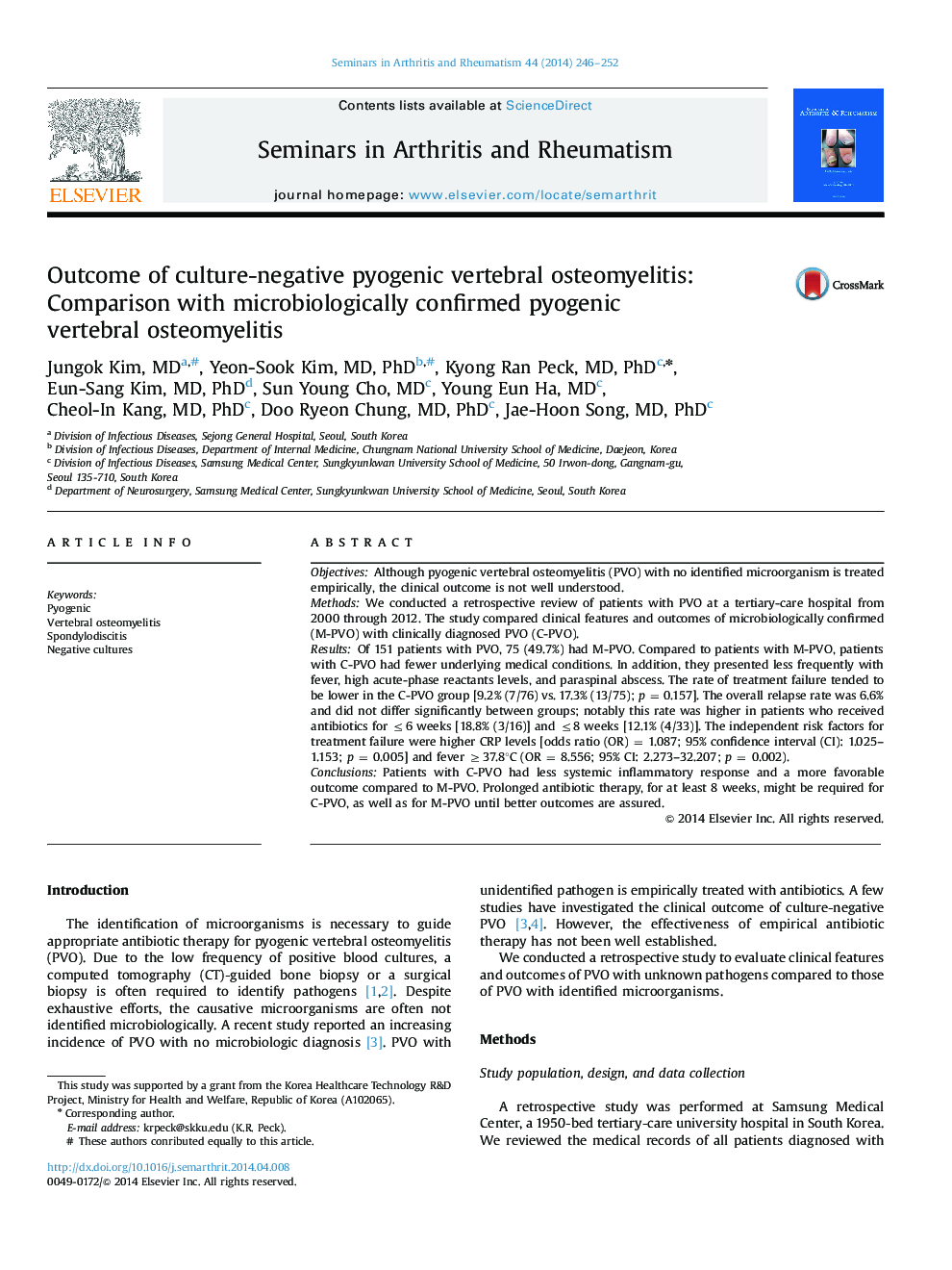| Article ID | Journal | Published Year | Pages | File Type |
|---|---|---|---|---|
| 5887686 | Seminars in Arthritis and Rheumatism | 2014 | 7 Pages |
ObjectivesAlthough pyogenic vertebral osteomyelitis (PVO) with no identified microorganism is treated empirically, the clinical outcome is not well understood.MethodsWe conducted a retrospective review of patients with PVO at a tertiary-care hospital from 2000 through 2012. The study compared clinical features and outcomes of microbiologically confirmed (M-PVO) with clinically diagnosed PVO (C-PVO).ResultsOf 151 patients with PVO, 75 (49.7%) had M-PVO. Compared to patients with M-PVO, patients with C-PVO had fewer underlying medical conditions. In addition, they presented less frequently with fever, high acute-phase reactants levels, and paraspinal abscess. The rate of treatment failure tended to be lower in the C-PVO group [9.2% (7/76) vs. 17.3% (13/75); p = 0.157]. The overall relapse rate was 6.6% and did not differ significantly between groups; notably this rate was higher in patients who received antibiotics for â¤6 weeks [18.8% (3/16)] and â¤8 weeks [12.1% (4/33)]. The independent risk factors for treatment failure were higher CRP levels [odds ratio (OR) = 1.087; 95% confidence interval (CI): 1.025-1.153; p = 0.005] and fever â¥37.8°C (OR = 8.556; 95% CI: 2.273-32.207; p = 0.002).ConclusionsPatients with C-PVO had less systemic inflammatory response and a more favorable outcome compared to M-PVO. Prolonged antibiotic therapy, for at least 8 weeks, might be required for C-PVO, as well as for M-PVO until better outcomes are assured.
